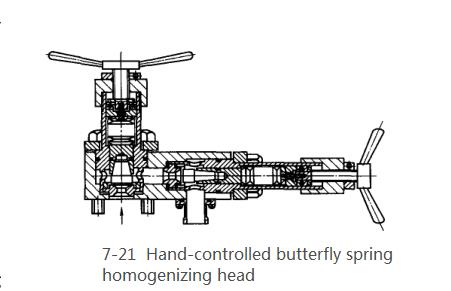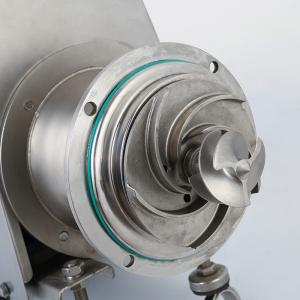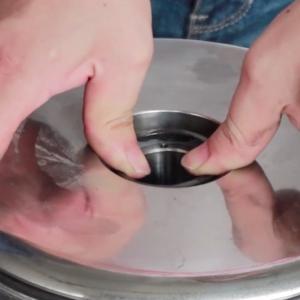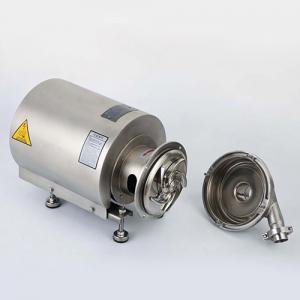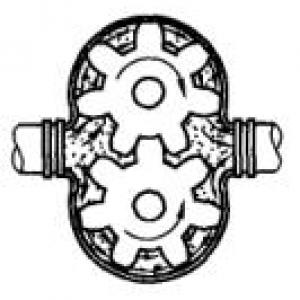What are Homogenization and High Pressure Homogenizer?
Homogenization has the dual functions of crushing and mixing. Its main purpose is to closely mix two immiscible materials, pulverize one kind of liquid droplets or solid particles into very fine particles or small droplets to be dispersed in another liquid to make the mixture a stable suspension. When the particle diameter is as small as the molecular diameter of the liquid medium, the molecular coupling force between the particles and the molecules will make it difficult to separate.
The homogenizer is widely used in the homogenization treatment of dairy products, fruit juices, soy milk, etc. It can improve the fineness of food and prevent the layering of liquid food.
1. Homogeneity theory
There are three kinds of theories about homogeneity: shear theory, impact theory and cavity theory.
(1) Shear theory. When the fluid flows through the gap of the homogenization valve at high speed, a great velocity gradient is generated, which generates a large shearing force. Under the action of the shearing force, the droplets first produce tensile deformation, and then rupture and break.
(2) Impact theory. The fluid hits the homogenization valve at a very high speed, and the droplets in the fluid are broken and become smaller under the action of a large impact force.
(3) Hole theory. When the fluid flows through the gap of the homogenization valve at a high speed, a huge pressure is generated. When the pressure drops to the saturated vapor pressure of the liquid, the liquid starts to boil and quickly vaporize, producing a large number of bubbles, and the flow rate gradually decreases as it flows out to the gap outlet , The pressure gradually increases. When the pressure increases to a certain value, the bubbles will suddenly burst, and a large number of cavities will be generated in an instant. The cavities are like countless mini-bombs exploding, releasing a large amount of energy, generating strong high-frequency vibration, and accompanied by strong turbulence , Produce strong shearing force, make droplets and particles broken and smaller.
2. High pressure homogenizer
The high-pressure homogenizer is composed of a high-pressure pump and a homogenizing head, and is currently used most in the food industry.
(1) High pressure pump
① Diagram of structure and working principle. 7-19 is a schematic diagram of the high-pressure pump structure. The high-pressure pump is a three-plunger pump, which is composed of a feed cavity, a suction valve, a discharge valve, and a plunger. When working, when the plunger moves to the right, the cavity volume increases, the pressure decreases, and the liquid pushes the suction valve into the pump cavity to complete the suction process. When the plunger moves to the left, the cavity volume gradually decreases and the pressure increases. The suction valve is closed and the discharge valve is opened to discharge the cavity liquid to complete the discharge process.
② Flow characteristics. The flow curves of single plunger pump, double plunger pump and three plunger pump are shown in Figure 7-20. The flow uniformity of single and double plunger pumps is poor, and the flow uniformity of three plunger pumps is better, so three plunger pumps are used in practice.
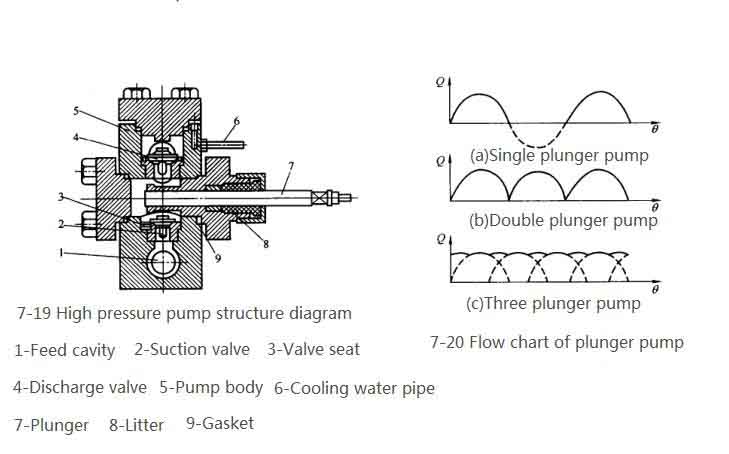
(2) Homogenizing head
The homogenizing head is an important part of the high-pressure homogenizer. Generally, the homogenizing head is composed of a shell, a homogenizing valve, a pressure regulating device and a sealing device, as shown in Figure 7-21. The general high-pressure homogenizer is composed of two-stage homogenizing valves in series.
